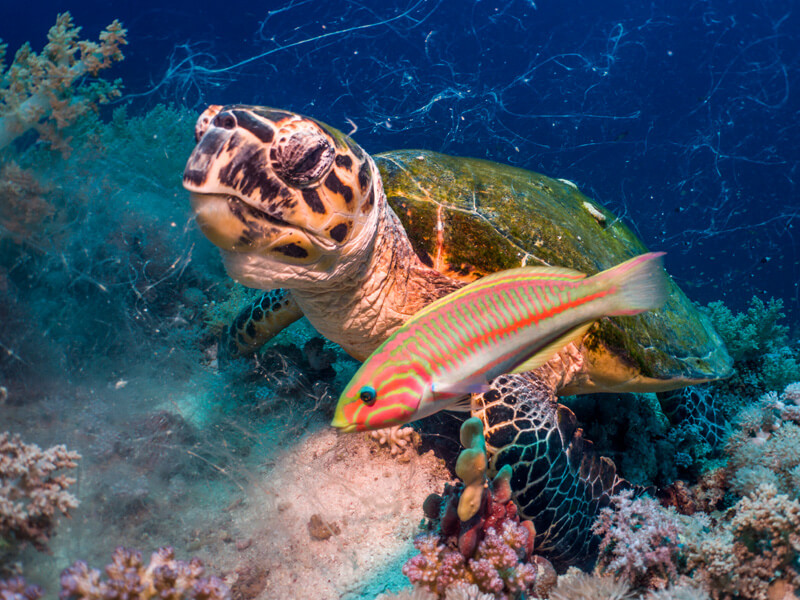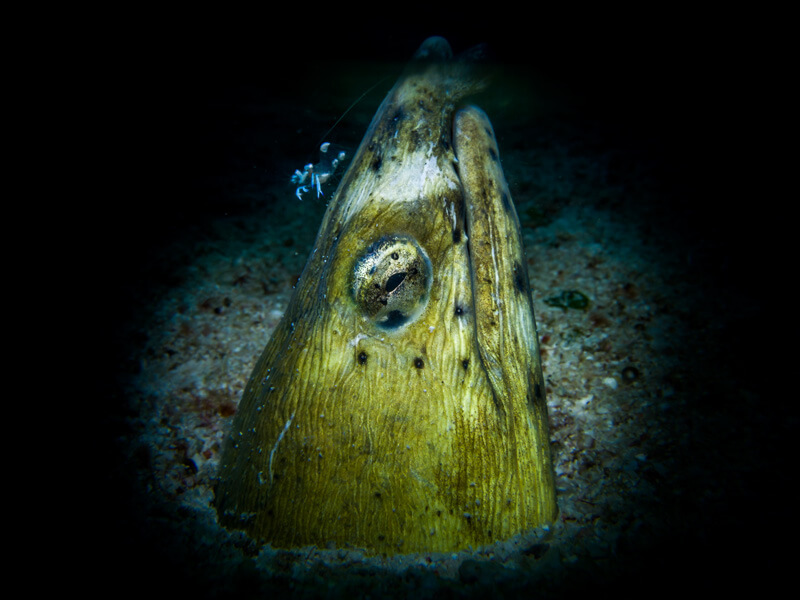SeaLife DC2000 How-To Photo Guide
with Tobias Friedrich
Tobias Friedrich started taking underwater photos in 2007. Since then his images have been published in prestigious scuba diving magazines such as Sport Diver, Unterwasser, Tauchen, Scuba Diver, Through The Lens and many others. In 2018 he won the coveted Underwater Photographer of the Year competition. Tobias is always passionate for new challenges and up for new, creative ways in underwater photography. Below, find some of his best images taken with the SeaLife DC2000 and Tobias’ advice on how to compose and capture the best shot in various underwater shooting scenarios.
And keep in mind, with the DC2000, you don’t have to be a professional to get great results, simply follow these basic steps and you’ll capture some amazing photos.

Be Still, Move Gently and Slowly
Hawksbill Seaturtle
Elphinstone Reef, Egypt
One big advantage of compact cameras over big DSLR setups is that you can hold the camera easily into tiny spaces and still float above the reef to not disturb animals or touch corals. That close-up perspective was ideal to photograph the turtle while eating soft corals and not disturbing it. It was important to use the diffuser on the strobe to soften the light on the turtle and not to give it too hard of shadows.
Equipment: SeaLife DC2000, Sea Dragon Flash, 0.5x Wide Angle Dome Lens
Settings: ISO 125, f/4, 1/100s
Using a Narrow Beam Angle
Dark-Shouldered Snake Eel
Malapascua, Philippines
Light is one of the most important things in underwater photography. In this case I used the spot light of the Sea Dragon 2100 Dual Beam Light to get a spot just right on the eel. To make the effect even more dramatic I had the light in my left hand and formed the light with my fingers to get a more narrow beam. With subject close to the ground it’s also important to get the cameras perspective as low as possible as well.
Equipment: SeaLife DC2000, Sea Dragon Flash, 0.5x Wide Angle Dome Lens
Settings: ISO 125, f/8, 1/320s
Be Still, Move Gently and Slowly
Hawksbill Seaturtle
Elphinstone Reef, Egypt
One big advantage of compact cameras over big DSLR setups is that you can hold the camera easily into tiny spaces and still float above the reef to not disturb animals or touch corals. That close-up perspective was ideal to photograph the turtle while eating soft corals and not disturbing it. It was important to use the diffuser on the strobe to soften the light on the turtle and not to give it too hard of shadows.
Equipment: SeaLife DC2000, Sea Dragon Flash, 0.5x Wide Angle Dome Lens
Settings: ISO 125, f/4, 1/100s



